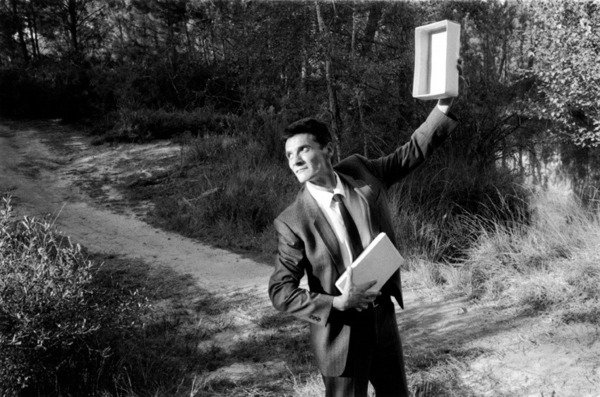A preface
dal 4/6/2013 al 27/7/2013
Segnalato da
Pedro Barateiro
Stephane Barbier Bouvet
Richard Brautigan
Michael Crowe
Jimmie Durham
Philippe Fernandez
Mark Geffriaud
Ruth Krauss
Antonio Frasconi
Guillaume Leblon
Zoe Leonard
Paul Sietsema
Elodie Royer
Yoann Gourmel
4/6/2013
A preface
Le Plateau, Paris
Works by Pedro Barateiro, Stephane Barbier Bouvet, Richard Brautigan, Michael Crowe, Jimmie Durham, Philippe Fernandez, Mark Geffriaud, Ruth Krauss and Antonio Frasconi, Guillaume Leblon, Zoe Leonard, Paul Sietsema, and an exhibition curated par Triple Candie.

Pedro Barateiro, Stéphane Barbier Bouvet, Richard Brautigan, Michael Crowe, Jimmie Durham, Philippe Fernandez, Mark Geffriaud, Ruth Krauss and Antonio Frasconi, Guillaume Leblon, Zoe Leonard, Paul Sietsema, and an exhibition curated par Triple Candie.
Curators: Élodie Royer and Yoann Gourmel
As a child, I didn't have an imaginary friend, I had an imaginary photograph. In every other way I was a normal (you could say boring) child. I didn't see the photo as anything particularly special, but I knew I should keep it to myself. Funnily enough, I thought someone might steal it if they heard about it.
I would stare at this image for countless hours and yet now, I couldn't really sketch it for you, not properly. It seemed to help me. Whenever I felt alone I would take a look and it would just pour into me. For all I knew I was holding the image upside down the whole time. It didn't matter, it was my little makeshift shelter.
I only found out what the picture was actually “of” years later at school. I was sixteen or seventeen, a typically bad, uninterested student. My big idea was to only ever read the prefaces in books so I could cover more ground. Not recommended.
Walking to school was depressing, I felt I was going deeper and deeper into a cave. There was only one teacher who I paid attention to, Mrs Padgett. The first thing she told us was Bertrand Russell's five minute hypothesis: “There is no logical impossibility in the hypothesis that the world sprang into being five minutes ago, exactly as it then was, with a population that "remembered" a wholly unreal past.” She had my attention.
She asked us to imagine what Bertrand had been thinking of five minutes before he had that idea. She asked us to imagine the background and the foreground swapping places. She asked us to imagine it raining frogs, then raining fish, then raining photographs of the sun. She asked us to look at things as though we were bad detectives in danger of getting fired. I remember once, while we were dissecting rocks (instead of toads) she said, “A soap bubble is as real as a fossil tooth.”
One day she mentioned, “Positrons.” I thought of my imaginary photograph. I suddenly knew it was of a positron. The word just seemed right. She handed Marie a picture and asked her to pass it around.
My school chair felt like a swing.
My mind began jumping around, I listened on: “This photo of a positron was taken by Carl Anderson in 1932. One of the puzzles of physics was (I pictured the front of the school) why all electrons are identical. Feynman had (the back of the school) an idea that all electrons could in fact be the same electron, just (a face, two blinks) bouncing back and forth between (a camera flash) the beginning of time and the end. An electron travelling (a baseball) backwards in time is what we (sculptures, drawings, films) call a positron. They do exist. Mind boggling, I know... But what is (another classroom) important to remember is...” Her voice faded out. The classroom rolled over and filled with amber as the picture was handed to me.
Michael Crowe
Image: Philippe Fernandez, Conte philosophique (la caverne), 1995 - 1998. Photo: Jean-Christophe Garcia
Press contact:
Isabelle Fabre, Communication manager: T +33 1 76211326 / ifabre@fracidf-leplateau.com
Magda Kachouche, Press officer: T +33 6 84 45 47 63 / mkachouche@fracidf-leplateau.com
Opening wednesday 5 june from 6 to 9 pm
Le Plateau
Angle de la rue des Alouettes et de la rue Carducci 75019 Paris
Hours: Wed–Fri, 2–7pm; Sat–Sun, 12–8pm
closed from December 22, 2012 to January 6, 2013
Free entrance - 5 euros for the events



